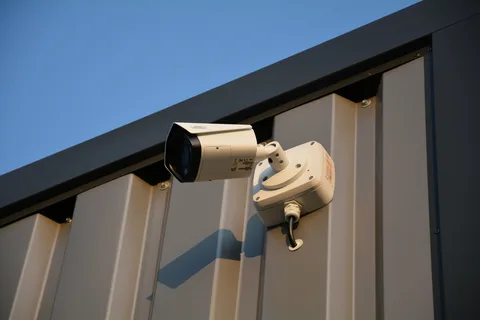Choosing the Right Security Camera for Your Needs
As concerns about safety and security continue to rise, the demand for effective surveillance solutions has never been greater. security camera have become essential tools for homeowners and businesses alike, providing peace of mind and protection against potential threats. However, with the myriad of options available on the market, choosing the right security camera can be overwhelming. This blog will help you navigate through the essential factors to consider when selecting a security camera that best fits your needs.
1. Determine Your Security Goals
Before diving into the various types of security cameras, it’s crucial to understand your specific security needs. Ask yourself the following questions:
- What do you want to monitor? Are you looking to protect your home, office, or outdoor spaces? Understanding the area you want to secure will influence the type of camera you choose.
- What are your primary concerns? Do you want to deter theft, monitor employee activity, or ensure the safety of your family? Identifying your main concerns will help you prioritize features when selecting a camera.
- Do you need live monitoring or recorded footage? Depending on your security strategy, you may prefer a system that offers live feeds, recorded footage, or both.
2. Types of Security Cameras
Understanding the different types of security cameras available is crucial for making an informed decision. Here are some common options:
a. Indoor Security Cameras
Indoor cameras are designed for use inside buildings. They come in various styles, including:
- Dome Cameras: These are often discreet and less intimidating, making them suitable for residential areas. They can be mounted on ceilings and offer a wide field of view.
- Bullet Cameras: These are more visible and can deter potential intruders. They are ideal for monitoring specific areas, such as entry points.
- Pan-Tilt-Zoom (PTZ) Cameras: These cameras offer flexibility, allowing users to remotely control the camera’s movement and zoom capabilities, making them suitable for large indoor spaces.
b. Outdoor Security Cameras
Outdoor cameras are designed to withstand the elements. Key features to look for include:
- Weather Resistance: Ensure the camera is rated for outdoor use, with IP ratings indicating its resistance to dust and water.
- Night Vision: Look for cameras equipped with infrared technology for clear visibility in low-light conditions.
- Wide Dynamic Range (WDR): This feature helps capture details in both bright and dark areas of the image, making it ideal for outdoor environments with varying light conditions.
c. Wireless vs. Wired Cameras
- Wireless Cameras: These cameras use Wi-Fi for connectivity, making installation easier and more flexible. However, they may be susceptible to signal interference.
- Wired Cameras: While more challenging to install, wired cameras offer a more stable connection and are less vulnerable to interference. They are often preferred for high-security areas.
3. Resolution and Image Quality
The resolution of a security camera determines the clarity of the video footage. Higher resolutions provide clearer images, making it easier to identify people and objects. Here are the common resolution types:
- 720p (HD): This resolution offers decent image quality but may not capture fine details.
- 1080p (Full HD): This is the standard resolution for most modern cameras, providing excellent image clarity for identifying faces and details.
- 4K (Ultra HD): For the best image quality, consider investing in a 4K security camera. These cameras provide stunning clarity and detail, making them suitable for larger areas where close-ups are necessary.
4. Field of View (FOV)
The field of view refers to the area that a camera can capture. A wider FOV allows you to monitor larger spaces with fewer cameras. Here’s what to consider:
- Standard FOV: Most cameras offer a FOV between 70 to 120 degrees, suitable for general surveillance.
- Wide-Angle Cameras: These cameras can provide a FOV of up to 180 degrees or more, making them ideal for monitoring large open areas.
- Adjustable Lenses: Some cameras allow users to adjust the focal length to zoom in or out, providing flexibility for various surveillance needs.
5. Storage Options
Consider how you want to store the recorded footage from your security cameras. There are several storage options available:
- Cloud Storage: Many modern security cameras offer cloud storage options, allowing you to store footage offsite. This is a convenient option, as it enables access from anywhere with an internet connection.
- Local Storage: Cameras can also be connected to DVRs or NVRs for local storage. This option provides greater control over your data but may require additional hardware.
- Hybrid Systems: Some cameras offer both cloud and local storage options, giving you the best of both worlds.
6. Smart Features and Integration
With the rise of smart home technology, many security cameras now come with smart features that enhance their functionality. Consider the following:
- Mobile App Integration: Look for cameras that offer mobile apps for easy access to live feeds, alerts, and recorded footage.
- Voice Control: Some security cameras are compatible with voice assistants like Amazon Alexa and Google Assistant, allowing for hands-free control.
- Integration with Other Devices: Consider whether you want your security camera to integrate with other smart home devices, such as smart locks, lights, and alarms, for a comprehensive security solution.
7. Budget Considerations
Setting a budget is essential when choosing a security camera system. Prices can vary significantly based on features and quality. Here are some tips for budgeting:
- Prioritize Features: Determine which features are most important to you and allocate your budget accordingly. For instance, if night vision is crucial, prioritize cameras with that capability.
- Consider Long-Term Costs: Don’t forget to factor in potential ongoing costs, such as cloud storage fees or maintenance expenses.
- Quality Over Quantity: It may be more beneficial to invest in fewer high-quality cameras rather than numerous low-quality options.
Conclusion
Selecting the right security camera involves careful consideration of your specific needs and the available options. By understanding your security goals, familiarizing yourself with the different types of cameras, and evaluating features such as resolution, storage, and integration, you can make an informed decision that best suits your requirements. Remember that investing in a quality security camera system is an investment in your peace of mind, ensuring the safety of your home or business.














Post Comment